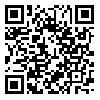Volume 12, Issue 4 (July & August 2021)
BCN 2021, 12(4): 541-550 |
Back to browse issues page
Download citation:
BibTeX | RIS | EndNote | Medlars | ProCite | Reference Manager | RefWorks
Send citation to:



BibTeX | RIS | EndNote | Medlars | ProCite | Reference Manager | RefWorks
Send citation to:
Mohammadi R, Hafez Yosephi M, Khanmohammadi R, Grampurohit N. Short-term Effects of Elastic Therapeutic Taping on Static and Dynamic Balance in Chronic Stroke. BCN 2021; 12 (4) :541-550
URL: http://bcn.iums.ac.ir/article-1-1974-en.html
URL: http://bcn.iums.ac.ir/article-1-1974-en.html
1- Neuromuscular Rehabilitation Research Center, Semnan University of Medical Sciences, Semnan, Iran.
2- Department of Physical Therapy, School of Rehabilitation, Tehran University of Medical Sciences, Tehran, Iran.
3- Department of Occupational Therapy, School of Rehabilitation Sciences, Thomas Jefferson University, Philadelphia, USA.
2- Department of Physical Therapy, School of Rehabilitation, Tehran University of Medical Sciences, Tehran, Iran.
3- Department of Occupational Therapy, School of Rehabilitation Sciences, Thomas Jefferson University, Philadelphia, USA.
Abstract:
Introduction: The current pilot study aimed to examine the short-term effects of ankle Elastic Therapeutic Taping (ETT) on static and dynamic balance.
Methods: Twenty-Four individuals with chronic stroke were assigned to an experimental or control group (n=12/group); they both received Conventional Physical Therapy (CT) for 3 weeks, 3 times per week. The experimental group additionally underwent taping to the ankle of the paretic side continuously for 3 weeks. Standardized measures for static and dynamic balance were administered at pre-test and post-test and analyzed using Wilcoxon and Analysis of Covariance (ANCOVA).
Results: The experimental group significantly improved on two measures, Biodex anterior-posterior static (P=0.03) and medial-lateral dynamic (P=0.04) balance indices, compared to the controls. Both groups improved within their respective groups for Berg Balance Scale and Functional Reach (P<0.05). Static balance consistently improved across measures with the experimental intervention with large effect sizes.
Conclusion: Ankle ETT, combined with CT, may be effective in the short-term for improving static and dynamic balance in stroke, compared to CT alone. A future larger randomized trial with longer follow-up is required to establish this method’s effectiveness.
Methods: Twenty-Four individuals with chronic stroke were assigned to an experimental or control group (n=12/group); they both received Conventional Physical Therapy (CT) for 3 weeks, 3 times per week. The experimental group additionally underwent taping to the ankle of the paretic side continuously for 3 weeks. Standardized measures for static and dynamic balance were administered at pre-test and post-test and analyzed using Wilcoxon and Analysis of Covariance (ANCOVA).
Results: The experimental group significantly improved on two measures, Biodex anterior-posterior static (P=0.03) and medial-lateral dynamic (P=0.04) balance indices, compared to the controls. Both groups improved within their respective groups for Berg Balance Scale and Functional Reach (P<0.05). Static balance consistently improved across measures with the experimental intervention with large effect sizes.
Conclusion: Ankle ETT, combined with CT, may be effective in the short-term for improving static and dynamic balance in stroke, compared to CT alone. A future larger randomized trial with longer follow-up is required to establish this method’s effectiveness.
Type of Study: Original |
Subject:
Clinical Neuroscience
Received: 2020/10/20 | Accepted: 2021/06/30 | Published: 2021/07/1
Received: 2020/10/20 | Accepted: 2021/06/30 | Published: 2021/07/1
Send email to the article author
| Rights and permissions | |
 |
This work is licensed under a Creative Commons Attribution-NonCommercial 4.0 International License. |








